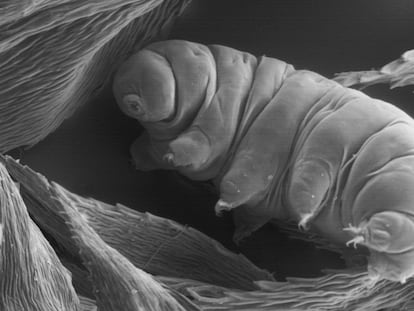Scientists create first life form that is immune to viruses
Researchers in the UK forced bacteria to produce proteins that do not exist in nature, protecting them from viral infection and opening up several possibilities for use in medicine and new materials

Scientists at Britain’s MRC Laboratory of Molecular Biology have rewritten the genetic code by which DNA instructs cells to form molecules, rendering the new bacteria immune to viral infection and opening up a world of possibilities for synthetic genomes.
Working with an E. coli bacterium as a base, the scientists made 18,000 alterations to create a genome that has never existed in nature, ushering in an era of completely synthetic lifeforms. When exposed to viruses, the bacterium was unaffected. The first obvious implication of the study published in Science would be to design new forms of drugs such as insulin, which is grown in bacteria, or new types of antibiotics.
One of the biggest barriers to creating artificial life forms has been introducing any substantial changes to “natural” proteins, but this has now been achieved. Led by scientist Jason Chin, the team at the Medical Research Council set out to demonstrate that the genetic code of a living being can be transformed in such a profound way that it can be made invulnerable to any bacterial virus.
Chromosomes contain four “letters” or bases: adenine (A), thymine (T), cytosine (C) and guanine (G). These combine into sets of three to make codons, the “building blocks” of life and also the form containing the instructions to make the 20 known amino acids.
The pathogen will find itself in a cell with an altered genetic code and will therefore be unable to express itself and produce its own proteinsJuli Peretó, University of Valencia
Chin’s team demonstrated how to rewrite the sequences of these codons so they have two amazing functions. The first is that they are capable of making new, artificial amino acids that did not exist in nature until now. The second is that the changes made in the genome of bacteria act as a “firewall” against most bacterial viruses, as they disable the functioning of several codons that viruses need to hijack the cell and replicate. This is the same process that SARS-CoV-2 uses to infect people, making them ill and in some cases killing them.
The potential of the findings for creating new drugs and other materials is remarkable, as the authors of the study point out. E. coli is a powerhouse on which humans depend to manufacture drugs and ferment food (even if it occasionally makes us sick as well). Modified variants of this and other bacteria are used in the production of more than 600 drugs, including insulin for diabetics and anticoagulant drugs that prevent thrombosis. E. coli is essential for making the new mRNA vaccines (Pfizer, Moderna) that work to immunise us against the coronavirus.
British scientists had already demonstrated how to create a bacterium whose genome is entirely artificial a couple of years ago. Their technique for rewriting genomes and expanding them also works in animal cells, making it possible to create organisms with artificial genomes, including flies and worms.
The large-scale changes in the genetic sequence of bacteria uses the CRISPR-Cas9 gene-editing technique, working like a pair of scissors to cut out large fragments of the original genome. It then replaces them with other artificial sequences previously designed on a computer. When the scientists spray a group of artificial bacteria with a cocktail of viruses that would wipe out any natural E. coli, the artificial bacteria hold their own and grow faster. The scientists have not extended the original genome of the microbe, but have made it shorter, updating and consolidating the original genetic code of a living being that is the product of millions of years of natural evolution.
Juli Peretó, an expert in synthetic biology at the University of Valencia, points out that the changes made “turn the cell into a place that is incomprehensible to an external visitor, such as a virus.” “The pathogen will find itself in a cell with an altered genetic code and will therefore be unable to express itself and produce its own proteins,” he said. “We are gradually overcoming the phase of genome plagiarism in synthetic biology, represented by the Venter Institute’s artificial genomes, which resynthesize, simplify or rearrange natural genomes, and we are starting to see genomes that contain completely new instructions,” he added.
Adding a large number of new amino acids to the existing catalog would have countless new uses, said Delilah Jewel and Abhishek Chatterjee, chemists at Boston College. This could include “biopolymers” that do not exist in nature, with uses ranging “from the development of new classes of biotherapeutics to biomaterials with innovative properties,” they said.










































